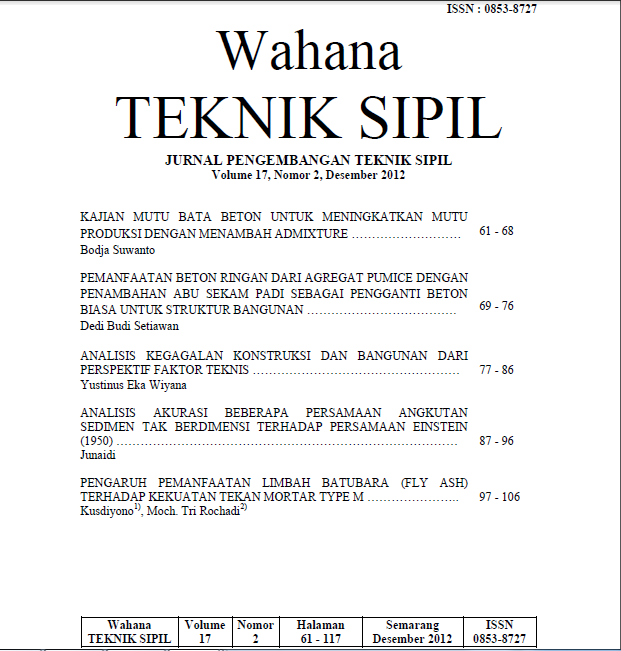Pemanfaatan Beton Ringan Dari Agregat Pumice Dengan Penambahan Abu Sekam Padi Sebagai Pengganti Beton Biasa Untuk Struktur Bangunan
DOI:
https://doi.org/10.32497/wahanats.v17i2.116Keywords:
pumice, paddy cfaff ash, light concreteAbstract
Light concrete is one of concrete type which more and more applied during now. In Europe and United States light concrete have been long enough and many utilized. Compressive strength yielded by lower light concrete than compressive strengths yielded by ordinary concrete. But, weakness found on light concrete can be overcome with excess obtained that is lighter wight. Causing enables once for high rise building sewer structures of height. In this research, more pointly weighs against at light concrete with aggregate pumice with addition of paddy chaff ash. Aggregate applied with light material that is pumice and addition of paddy chaff ash to increase compress and exploits raffle around rural public. Paddy chaff ash is material having property as puzzolan. Weakness of light concrete having compressive strength lower than ordinary concrete tried improved with addition of usage of paddy chaff ash having property pozolan. Concrete pumice with comparison ( 1 : 2 : 2) with addition of chaff ash, optimum condition reached at chaff ash content 10% , this still possibly increasing but its the increasing of on the wane.
Downloads
Published
Issue
Section
License
Authors who publish with this journal agree to the following terms:Authors retain copyright and grant the journal right of first publication with the work simultaneously licensed under a Creative Commons Attribution License that allows others to share the work with an acknowledgement of the work's authorship and initial publication in this journal.
Authors are able to enter into separate, additional contractual arrangements for the non-exclusive distribution of the journal's published version of the work (e.g., post it to an institutional repository or publish it in a book), with an acknowledgement of its initial publication in this journal.
Authors are permitted and encouraged to post their work online (e.g., in institutional repositories or on their website) prior to and during the submission process, as it can lead to productive exchanges, as well as earlier and greater citation of published work (See The Effect of Open Access).






